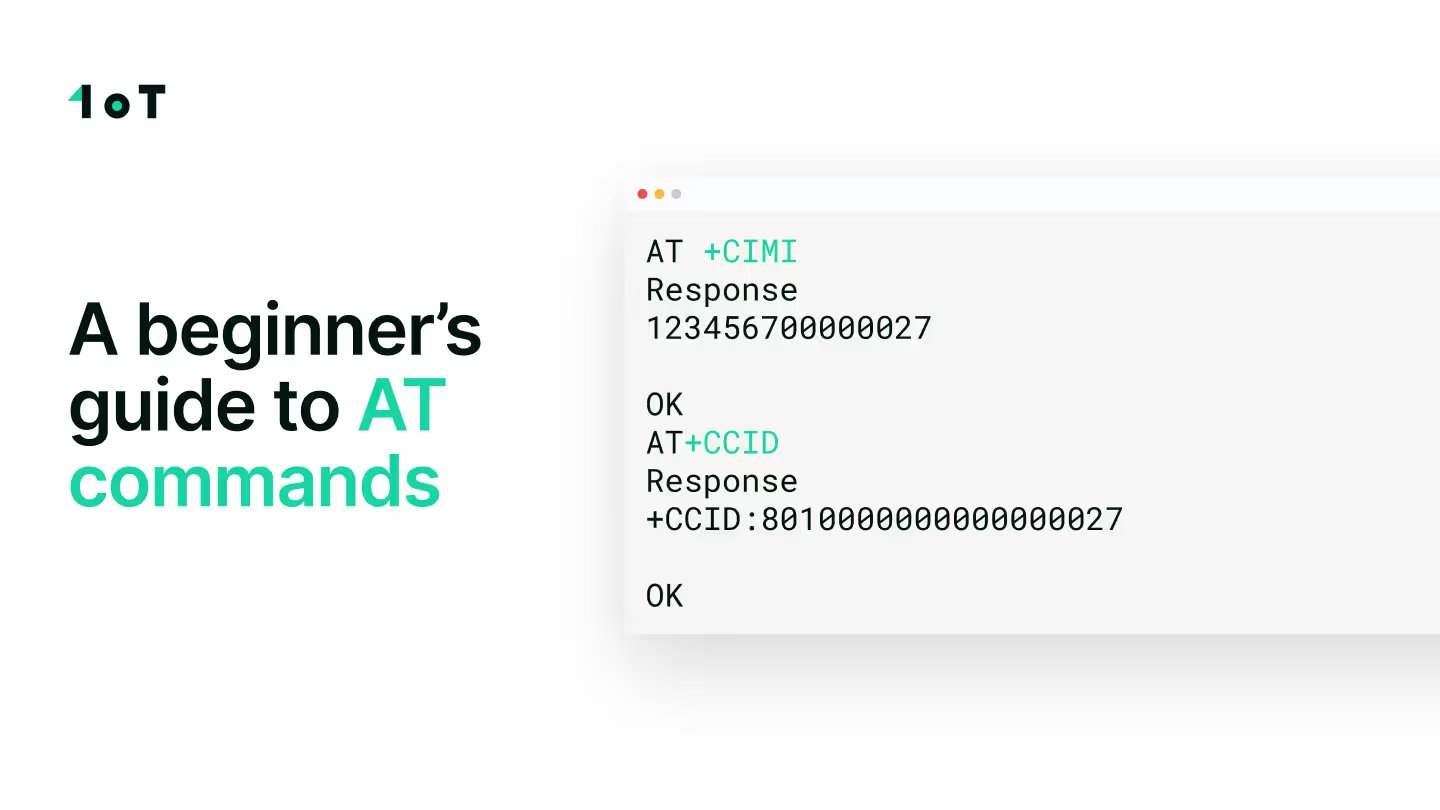The essential guide to IoT connectivity: All your questions answered

In the IoT (Internet of Things), connectivity fuels communication among devices. And at the heart of this are SIM cards designed specifically for machine-to-machine interaction. It's important to understand the SIMs' role in connecting devices across networks and how these networks facilitate smooth data flow. This series of questions and answers by Krakul and 1oT explores the specifics of IoT connectivity and the critical elements that make it all work.
Jump to:
Connectivity Essentials
Network Components
Network Dynamics
Data Transmission and Protocols
Network Architecture and Adaptability
Connectivity Essentials
1. What is the role of an IoT SIM card in connecting a device to a network, and how does it differ from a regular SIM card?
These SIM cards are designed specifically for machine-to-machine communication or IoT (Internet of Things), where devices or machines communicate with each other or a central server. They are optimized for IoT applications and are often used in industrial, commercial, and enterprise settings. With a few exceptions, IoT SIM cards are not meant for making voice calls or sending SMS messages.
2. How do IoT devices obtain and use IP addresses within the network?
IoT devices typically obtain IP addresses through Dynamic Host Configuration Protocol (DHCP) from the network's DHCP server. Once assigned, these IP addresses enable devices to communicate within the network and externally through the internet.
3. What is the significance of DNS (Domain Name System) in the IoT SIM connection process? How are DNS requests and responses handled?
DNS is crucial for IoT connectivity as it translates human-readable domain names into IP addresses. When IoT devices make DNS requests, the DNS resolver in the network processes these requests, retrieves the corresponding IP address, and returns it to the IoT device for routing purposes.
Network Components
4. What are the functions of SGSN and MME in IoT connectivity? How do they contribute to device-network communication?
SGSN (Serving GPRS Support Node) and MME (Mobility Management Entity) are elements in cellular networks. SGSN manages data and signaling for IoT devices, while MME handles device mobility and tracking. They collectively ensure efficient communication between the IoT device and the network.
5. How is seamless connectivity maintained when an IoT device moves to a new location, and what role does MME play in this scenario?
When an IoT device moves, it updates its location with the network, ensuring seamless connectivity. The MME plays a vital role in tracking device movements and routing data appropriately as the device switches between cell towers or network areas.
6. How are security protocols, such as authentication and encryption, applied at the network level to protect IoT device data during communication?
The SIM must be authenticated to ensure it has the right to access the network. A random number is generated by the Base Transceiver Station (BTS) and sent to the Mobile Station (MS). SIM card holds the secret key called Ki. A3 algorithm takes the random number and Ki as inputs and sends the result back to BTS. The network operator behind the BTS knows the Ki-s of the SIM cards it has distributed. Thus, it can run the same calculation and compare the results. If the results match, we can ensure the MS is authentic.
Ki is used in encryption/decryption as well, although not directly. Ki is used with the random number generated by BTS in the A8 algorithm to generate a session-specific ciphering key called KC. KC is then used in the A5 algorithm to encrypt/decrypt the data. Cipher mode must be initiated by the BTS.
Network Dynamics
7. What are the critical differences in the connection establishment process between 2G, 3G, 4G, and 5G networks for IoT devices?
2G was mainly intended for voice calls and is still a circuit-switched network analogous to conventional landlines. However, it is digital communication, so SMS and data transmission is possible.
The connection establishment process has the following steps:
- Registration with the network that includes an authentication process and encryption setup.
- Location update so the network knows where the device is in the network architecture. Otherwise, it won't know where to send the incoming data.
- Communication channel allocation from the IoT device to the appropriate destination.
In 3G, the data is packet-switched and similar to computer networks, where each device has a unique address, and packets containing the address are routed through the best available channel. The registration process is more advanced but allows for more efficient data services.
The most notable addition in G3 compared to G2 is Quality of Service management. This ensures that different types of services receive the appropriate priority and resources.
4G is fully IP (Internet Protocol) based. However, SIM is still used for network registration, authentication, and encryption. 4G introduced Dynamic Resource Allocation that adapts to specific service requirements. This includes allocating radio resources on-demand and adjusting modulation and coding schemes for optimal data rates.
From a connection standpoint, the key difference between 5G and previous generations is the Dual Connectivity option. Dual connectivity allows the device to connect to multiple base stations simultaneously. This enhances data rate and reliability, especially in scenarios with challenging radio conditions.
In summary, each generation of mobile networks has evolved to provide better data rates, lower latency, and improved support for IoT devices. The transition from 2G to 5G reflects significant technological advancements and a shift toward more data-centric and versatile communication networks.
If you're interested in learning more about LTE-M and NB-IoT, check out our previous blog. You can also read about the different communication technologies available for IoT devices.
8. What are handovers in IoT network connections, and how do SGSN and MME facilitate this transition?
In IoT network connections, handovers refer to seamlessly transferring a connected device from one cell or access point to another while maintaining an ongoing data or communication session. Handovers are critical for ensuring continuous connectivity and optimal performance as IoT devices move within the coverage area of a cellular network. SGSN (Serving GPRS Support Node) and MME (Mobility Management Entity) are key components in the context of 2G/3G and 4G/LTE cellular networks, respectively, and they play a crucial role in facilitating these handovers.
SGSN (Serving GPRS Support Node):
In 2G (GSM) and 3G (UMTS) networks, SGSN is responsible for packet-switched data services and mobility management for mobile devices. In the context of IoT, SGSN helps with the following aspects of handovers:
- Tracking and Management: SGSN tracks the location and movement of IoT devices within the network. When an IoT device moves from one cell to another (or one location to another), the SGSN updates the device's new location.
- Handover Decision: SGSN decides when a handover is required. This decision is based on signal strength, quality, and the available cells. When it determines that a handover is necessary for maintaining the quality of service, it initiates the handover process.
- Handover Execution: Once the SGSN decides a handover is needed, it communicates with the target cell's base station and coordinates the handover process. The SGSN ensures that the device's data session is smoothly transferred to the new cell without interruption.
MME (Mobility Management Entity):
In 4G/LTE networks, MME takes on a similar role to SGSN but with some additional capabilities, especially in the context of LTE. Here's how MME facilitates handovers for IoT devices:
- Tracking and Management: MME tracks the location and mobility of IoT devices within the LTE network. It maintains information about the devices' status and location, allowing it to make informed handover decisions.
- Handover Decision: MME decides when and how handovers should occur based on the Quality of Service requirements and network conditions. It considers factors such as signal strength, interference, and available cells.
- Handover Execution: Once the MME determines a handover is necessary, it communicates with the appropriate base station (eNodeB in LTE) to initiate the handover. The MME ensures that the data session is transferred to the target cell efficiently and without disruption.
Data Transmission and Protocols
9. How are data packets routed from IoT devices to their destination servers, and what role does the IoT SIM card play in this routing process?
- Data Packet Generation: IoT devices generate data packets as they collect and transmit information. These packets contain sensor data, telemetry, or other information that needs to be sent to a remote server for processing and analysis.
- IoT SIM Card Identification: Each IoT device has an IoT SIM (Subscriber Identity Module) card. The IoT SIM card is a specialized SIM card designed for IoT applications. It contains essential information such as the device's unique identifier (IMSI - International Mobile Subscriber Identity), authentication keys, and the IoT device's access credentials.
- Network Registration: When the IoT device is powered on or enters a coverage area, it establishes a connection with a cellular network. The IoT SIM card is used to authenticate the device on the network. The device communicates with the network's core infrastructure, including the Mobile Network Operator's (MNO) Home Location Register (HLR) and Visitor Location Register (VLR).
- Assignment of IP Address: The cellular network assigns an IP address to the IoT device. This IP address allows the device to communicate over the internet.
- Data Packet Transmission: Once the IoT device has an IP address, it can send data packets over the cellular network. These data packets are routed through the network toward their destination. The process involves several key components:
- eNodeB (in LTE networks): The IoT device communicates with the base station (eNodeB in LTE) for radio access.
- Mobility Management Entity: The MME helps manage mobility and ensures the device's location is tracked. It plays a key role in routing packets within the LTE network.
- SGW (Serving Gateway) and PGW (Packet Data Network Gateway): These components are part of the Evolved Packet Core (EPC) in LTE networks. They handle routing and forwarding of data packets. The PGW is the entry and exit point between the cellular network and the internet.
- Routing to Destination Server: The data packets are forwarded from the PGW to the core network and then to the internet. The destination server is identified by its IP address or domain name. Routers within the core network and the broader internet use routing protocols to determine the path the packets should take to reach the destination server.
- Internet Routing: Within the broader internet, routers and the Border Gateway Protocol (BGP) are responsible for routing data packets across different networks and autonomous systems until they reach the destination server.
- Destination Server Processing: Once the data packets arrive at the destination server, they are processed, and the relevant information is extracted for analysis, storage, or other actions.
10. What happens at the network level when an IoT device initiates a data transfer request?
- The IoT device registers to the network. The SIM is used to authenticate the subscriber and generate cipher keys for secure communication. An IP Address is given to the IoT device if the connection is made through a 4G or 5G network.
- Once the device has access to the network, a connection is established to the appropriate server or gateway. For this, the Domain Name Server is contacted, and the target address is resolved. Protocols used may include MQTT (Message Queuing Telemetry Transport), CoAP (Constrained Application Protocol), HTTP (Hypertext Transfer Protocol), or other protocols suitable for IoT applications.
- In most cases, the data packets will need to interact with one or more gateways to translate between the global internet and Local Area Networks.
- Firewalls and security checks will likely be encountered. These components are used to intercept and filter the traffic based on security policies.
- Once the data reaches the destination network, it is routed to an application-specific port on the destination device. The port number uniquely defines the service the packet is directed to.
- If the transmission layer protocol is TCP (Transmission Control Protocol), the destination device replies with an ACK (Acknowledgment) message to the IoT device.
11. What is the significance of protocols like MQTT in IoT device communication over packet-switched networks? How do they interact with network components like routers and switches?
MQTT is especially useful in IoT devices due to its small protocol overhead and, thus, reduced demands for power and network bandwidth. MQTT has two types of network entities: message brokers and clients. IoT devices can publish messages to brokers and subscribe to messages from other clients, thus eliminating the need for synchronization. This helps in unreliable network conditions where a connection may not always be available. This also means that the MQTT client must not be in constant listening mode not to miss information sent to it.
MQTT runs on top of a transport protocol, for example, TCP/IP. And from a network perspective, it behaves like any other network protocol. MQTT messages are wrapped in the TCP packets and transmitted over the routers to designated networks.
MQTT-SN is used when the transport protocol needs to be UDP/IP or Bluetooth.
Network Architecture and Adaptability
12. How do IoT SIM cards interact with the Home Location Register (HLR), Visitor Location Register (VLR), and Gateway GPRS Support Node (GGSN) in the network architecture?
HLR is used in 2G and 3G networks. They provide the information needed for SIM initialization, authentication, authorization, service provisioning, and data routing. On 4G networks, the same function is performed by the Home Subscriber service. And on 5G networks, the function is provided by the Unified Database Server.
VLR performs the same functions for roaming subscribers to reduce the number of queries to HLR. The main difference between HLR and VLR is that the VLR deletes the subscriber info once the subscriber moves out of the Mobile Switching Center (MSC) area.
In IoT devices, these services are essential for network access and data connection.
GGSN is the node between the mobile network and the global system of interconnected computer networks or simply the internet. For example, if the target of IoT data is an internet database, the data needs to pass through GGSN. The GGSN ties the internal network identifier to the external address and thus facilitates communication between networks. SIM provides the unique identifier for the IoT device in the mobile network.
13. The "bearer" concept in IoT connectivity. How is it established, and how does it affect data transmission for IoT devices using packet-switched networks?
Whenever a service is provided to a device, it must be associated with a Radio Access Bearer that specifies the data link layer and physical layer configuration for the transmission. It creates a radio channel between the user equipment and the base station.
The Network layer (Layer 3) Radio Resource Control protocol establishes one or more Radio Access Bearers when a data session is initiated. Each bearer is associated with a specific quality of service parameter, which defines the level of service that the network guarantees.
The properties of these radio links in different network generations determine the data rates, latency, error rates, and other parameters relevant to data transmission.
It must be noted that the concept of "bearer" has evolved with the evolution of networks from 2G to 5G, but the essence is the same. The bearer creates the link between equipment in the network and thus facilitates telecommunication.
14. How do IoT devices switch between network types based on availability and requirements? What network-level components are involved in this process?
Cellular network modules used in IoT devices usually have one newer standard network interface, like 4G LTE or 5G, and 2G for fallback. An IoT device may switch to a 2G network if better options are unavailable. Otherwise, it's rare for IoT devices to switch between multiple network types.
Connectivity management platform (CMPs) also play a huge part in IoT connectivity, so check out our overview of them. If there are any questions we didn’t answer for you, contact hacking@1ot.com!















.avif)














.avif)
























































